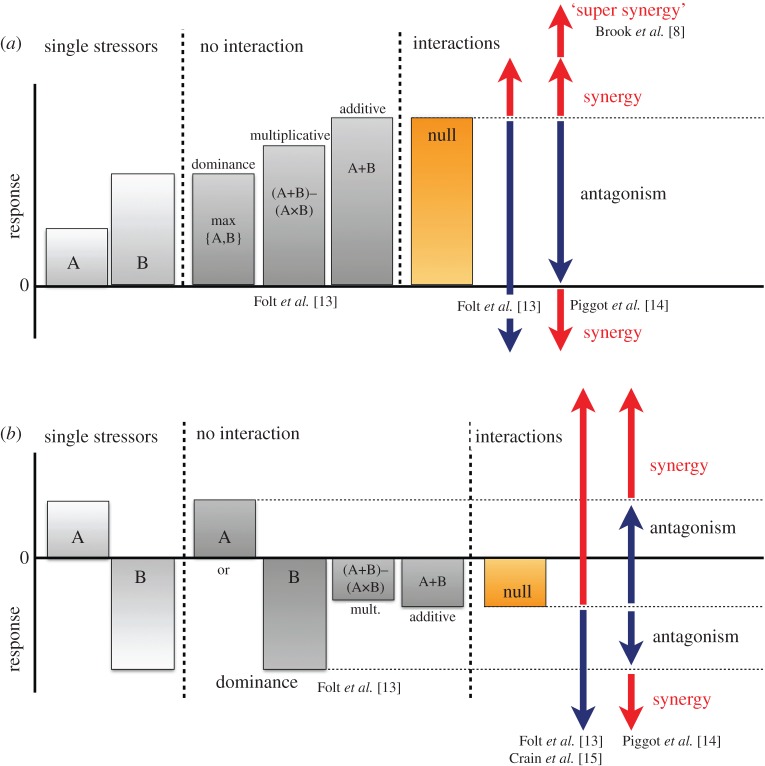Figure 1.
Models for defining ecological synergies and other interactions between multiple stressors. (a) Two stressors (A and B) impact a biological response in the same direction when acting separately. Their combined effect could simply be equal to the effect of one of the two stressor, i.e. a dominance effect, or be additive, i.e. the sum of the two stressor effects with or without a multiplicative-risk correction. Alternatively, stressors can interact either antagonistically or synergistically. Null models (from an additive or multiplicative risk expectation; we use the additive expectation as the null model here) provide the threshold for distinguishing between these interactions. Interaction type becomes difficult to label when the combined response is in a direction opposite that of the individual stressors (antagonism by Folt et al. [13] versus synergy by Piggot et al. [14]). Some authors [8] also identify an area of ‘super-synergy’ in relation to minimum population size. (b) Two stressors have opposing effects on a biological response. Here, some authors use a null model to define interaction types [13,15], while others advocate using the effects of each stressor to classify interactions [14]. (Online version in colour.)

